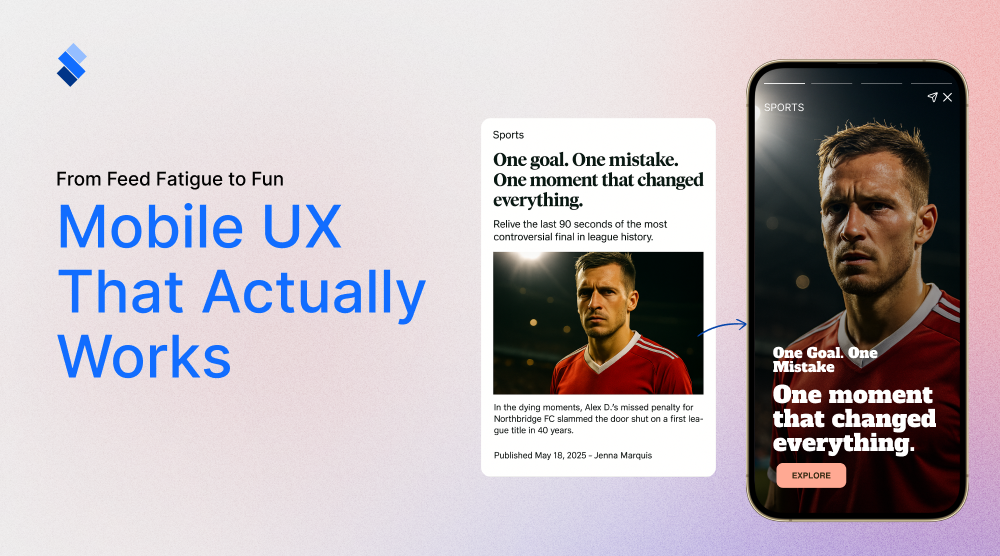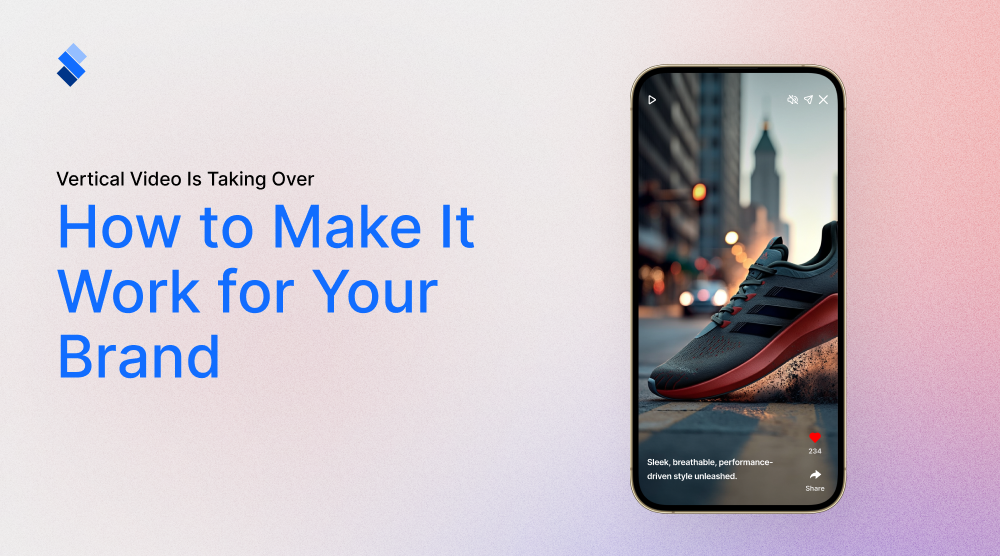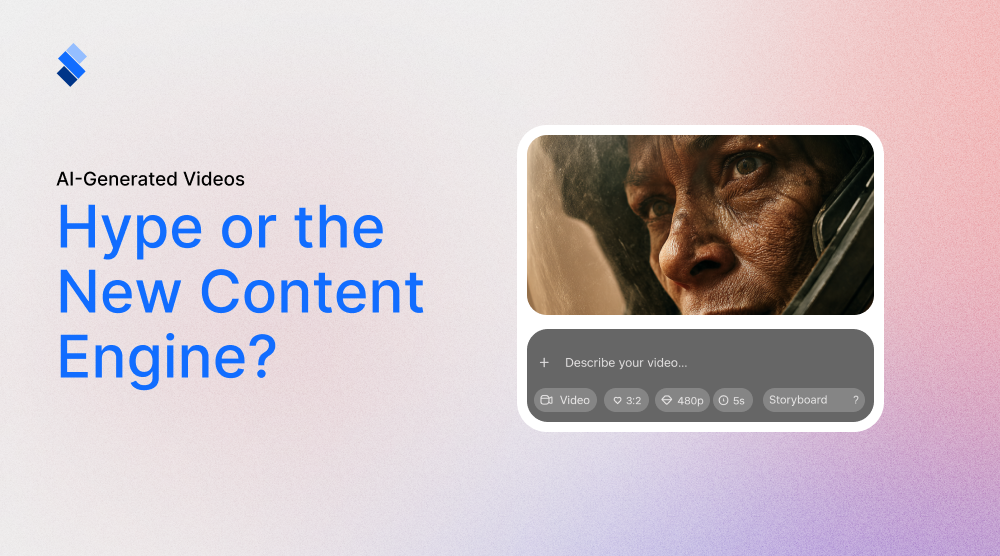Web stories and the future of marketing
By understanding web stories and the future of marketing you will know how to orient your efforts and ensure notable results.

As one of the emerging online trends, web stories have taken marketing by storm. For a while, it was believed that web stories were simply a fad. And that it will blow over as most fads do. But, it has become plainly obvious that web stories are here to stay. So, let's use this article to take a more in-depth look into web stories and the future of marketing.
Understanding web stories
Web stories first made their appearance in 2018. Back then they were called AMP stories. This is because, at the time, Google used them as an extension of its AMP (accelerated mobile page) technology. Even though they had a similar base, web stories soon grew to be quite distinct from standard AMP. The main distinction is that a web story is a full-fledged page that relates only to itself and that you can host on your website.
To help push this technology further, Google made it open source. This greatly aided in the widespread use of web stories, as they were usable and alterable without any intervention from Google. Along with the increase in web stories came tools that helped create and modify them with greater ease and efficiency. This brings us to StorifyMe and the modern era of web stories in marketing.
Where do web stories look like?
On the surface, web stories look like story content you find on any type of social media. Facebook stories, Instagram stories... If you've seen any of those, you already have an idea of what web stories look like. While they are usually in vertical format, as it is mobile-friendly, you can also create desktop versions for your website. With modern tools like StorifyMe, your stories can contain things like:
- Text.
- Images.
- Videos.
- Animations.
- Gifs.
- Interactive elements.
- Links.
Using these alone gives you the ability to create a full-fledged page that you can afterward place on your website. To tell a full story, you will likely need to use multiple web stories in a row. This gives you even more freedom to create the experience that you want, as the transition between the stories is entirely under your control.
Advantages of web stories
The more savvy readers among you have probably already wondered "Why shouldn't I just stick with story content on social media?". Well, this is a valid question to ask. After all, social media platforms come with built-in tools to create web stories. And, by placing them on your social media profiles you automatically gain all the audience that your profile brings. Therefore, it is only natural to make use of stories on social media and not bother with creating web stories outside of it, right? Well, not quite.

As it turns out, web stories outside of social media can have impressive advantages. The more notable ones are:
- Unlimited lifespan - Stories on social media platforms only last for a limited time. Meanwhile, the stories that you create on your own can last indefinitely as they are your content.
- Ownership - While on the subject, it is important to highlight that web stories are yours, and yours alone. If you create stories on social media platforms, they will be the content owners. So, if for some reason they want to take your stories down, they don't have to consult you. Meanwhile, by being the sole owner, you can track the performance metrics of your stories and use them as any other website content.
- Indexing - While this aspect may seem small, know it is far from so when it comes to SEO management. Namely, because you can index your stories, you can ensure that the
- Links - While some social media platforms do allow you to place outgoing links on your stories, others are less willing to drive people's attention away from their platform. But, if you use web stories, you can easily link to other content, other stories, or completely different websites.
Where can you place web stories?
The truly great thing about web stories is that you can essentially place them anywhere. This allows you to better integrate your web stories with your overall online presence and provide a natural transition between them and other types of content. You can also use stories as a unique way to promote your brand and achieve better online traffic. To give you some examples of where you can place web stories:
- Website - When integrated properly, web stories give a new and distinct feeling to an otherwise bland website.
- SERP - Search Engine Response Page makes great space for web stories. After all, they are all about presenting your website in a clear-cut way.
- Google Discover - As of 2020 Google announced that web stories will be featured in Google Discover. Seeing that they will take up prime page real estate on Google Discover, you'd be smart to utilize it. Here, again, we can see how motivated Google is to push web stories as a new type of content.
- Social networks - Just because you don't use social media platforms to create stories, doesn't mean that you shouldn't use them for posting. After all, by doing so, you get all the benefits of social media, with only a few of the drawbacks.
Who uses web stories?
As of now, web stories can be seen as simple promotional content with no unique marketing use. Companies do use story content on their social media platforms. But they seldom take the effort to bring the story content out of social media and engage them in a more serious manner. While at first glance this may seem to paint a bleak picture for the future of web stories, a more in-depth look will show you that it is far from so.

Namely, numerous marketing studies show just how effective web stories are. They address the key issues in users' attention span and engagement reluctance with surprising ease. This is why Media companies make full use of web stories, as they are well aware of how powerful they are. If you wish to stay ahead of the curve, we strongly suggest that you consider using web stories in your marketing. That way you won't have to fight the steep competition that will creep up in a year or two.
How web stories shape the future of marketing
So far we've gone over what web stories are, and how you can use them for promotion. Now, let's explain some predictions about web stories and the future of marketing.
Understanding current SEO
As it is now, trying to get good SEO results is an uphill battle. Google is ruthless in trying to sort good articles, and it is constantly coming up with newer, smarter ways to bring the best upfront. A couple of years ago, the online market wasn't as saturated as it is today with written content. This allowed companies to at least have a decent local SEO ranking if they couldn't compete with the worldwide audience. But, today, even the local SEO isn't as competition-free as you would like it to be.
To push through the SEO rankings, you cannot rely on old methods and hope that you will get a stroke of luck. The smarter approach is to push your brand through a new pathway and engage the SEO rankings in a different way. This is where the web stories step in.

As we said, Google is quite motivated to push web stories and increase their importance. Therefore, while you would have to invest a lot of money and time into bringing an article to the front page of Google search results, you only have to invest a fraction for web stories. If you integrate them properly with the rest of your website, it as a whole will have a better SEO ranking. So, not only will you be able to promote your content on Google's front page. But, you'll also boost your previous content and help bring in fresh online traffic.
Storifying your marketing
If you are new to web stories, you're probably unfamiliar with storifying in general. What storying means is using your marketing content to essentially tell a story? Currently, most marketing content tries to promote either a product or a service in a straightforward fashion. Standard commercials are your best example, as they concede information to bite-sized format, and promote it constantly. While this is still effective, storifying your content means taking a different route.

When you storify something you tend to focus more on content and less on length. Your stories can have a clear beginning, middle, and end, where each segment serves a different purpose. While previously your marketing content had to contain all of that, now you don't have to condense it so much. For instance, you can use the beginning of your story to catch the viewer's attention. The middle to elaborate on your promotion. And the end for CTA. This is just one example of how stories are used, as you can essentially storify any aspect of your marketing. What makes web stories perfect for crafting online stories is that they are naturally separated into segments. Therefore, a single web story can literally be a story where you tell your viewers what they ought to know.
Tackling the current attention span
One of the biggest obstacles modern marketing managers have to tackle is the shrinking attention span of the average viewer. While estimates vary, most researchers agree that the attention span of an average user is below 10s for the content they are not previously interested in. Therefore, if you are trying to find a new audience with standard content, you are fighting an uphill battle. But, what web stories allow is to highlight bite-sized content that can be well absorbed within 10 seconds. Therefore, web stories again address one of the primary issues with modern marketing.
Social networks
You don't have to be a marketing expert to realize that social media platforms are an ever-growing phenomenon. Now, more than ever we are connected to various social media, each of which tends to serve a different purpose and caters to a different audience. Therefore, you can hardly expect to make it modern marketing if you don't tackle social media with due care.

Where marketing managers usually struggle is connecting their social media to their website. After all, you want to catch people's attention on social media. But, once you do, you want to draw them to your website. If they stay on social media they are likely to view other content, and quickly forget your brand. Unfortunately, drawing people away from social media is easier said than done.
The whole point of social media is that it is quite comfortable to view and scroll through. Meanwhile, websites take you away from that comfort and put you in a different online environment. So, how are you supposed to bridge that gap between social media and websites? Well, what currently works best is story content. Web stories are engaging enough to draw the viewer's attention. And, if you design them properly, they can be interesting enough to divert their attention to your website. Web stories that are properly integrated with the website's design help with the seamless transition between social media and the website.
Future of marketing
When discussing web stories and the future of marketing it is easy to get excited and believe that all marketing will revolve around story content. Simply put, it will not. Standard marketing content like articles, social media posts, and e-mails still has a role to play. But, what's great and powerful about web stories is that they address the biggest issues that the current marketing is facing. To sum up, web stories:
- Help acquire better SEO results.
- Enable you to storify your marketing content with ease.
- Address the shrinking attention span of an average viewer.
- Help transition viewers' attention from social media to your website.
If you plan on using the untapped potential of web stories we suggest that you start now. The competition is still lacking and you'd better try to be first in your local market than to have to overcome existing competition.







